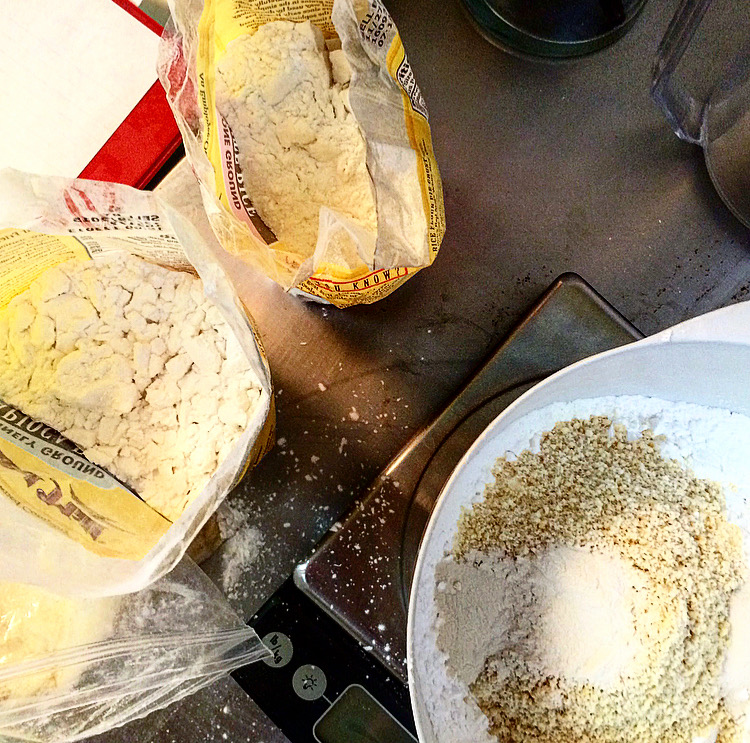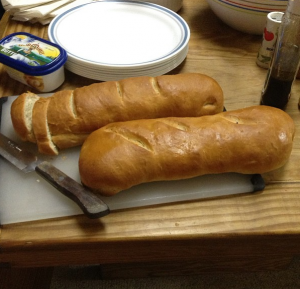 I get asked about what we use to replace wheat flour often.
I get asked about what we use to replace wheat flour often.
The gluten-free flour blend we use for most of our baked goods at The Red Bandana is comprised of four components:
- White rice flour: Although it can lead to poor texture when used alone, white rice is valuable in a blend because it has a neutral flavor and it adds volume without being too heavy or gummy.
- Brown rice flour: Brown rice brings to the party a little more nutrition, more complexity in flavor, and a little color (nobody wants white-as-a-sheet bread).
- Potato starch: Soft, powdery, and much less gritty than either type of rice flour, potato starch is nice and tenderizing. Much like corn starch can thicken a gravy, it adds that chewy gluten-like action in GF doughs.
- Tapioca starch: The least well-known of our four ingredients, tapioca is a root vegetable (aka cassava) common in South America and its starch allows gluten-free baked goods to be more elastic and hold their structure better than a gritty, crumbly rice-reliant product. If you’ve ever had boba tea you might be familiar with that nice bounce-y stretch-y feeling 🙂
Although we do deviate from this blend for some items that we’re looking for a different texture or nutritional profile in, I highly recommend this combination for most cakes, cookies, and even some breads. The ingredients are all available at most Asian grocers and on Amazon if you’d like to source your own–feel free to ask us for the exact ratios! If you’d prefer to get it already blended (which is nice because you won’t have odd small amounts of leftover components) we do sell it by the pound, just ask next time you’re at the shop 🙂
One final component that can be crucial in many GF items is xanthan gum. We don’t blend this in because I find that the amount you want in different items varies widely and can be disastrous if wrong. Too much xanthan gum and your item will never bake through, staying gummy and custard-y no matter how long it’s in the oven; add too little and it will be dry and fall apart. Most good gluten-free baking recipes will advise an amount to add (usually less than a teaspoon), and it’s best to add it to your flour blend ad hoc.
Note that you can’t sub this blend in for wheat flour in most normal glutinous recipes (you use much less flour for GF breads, for example), but when used appropriately we find that the results with this combination can be just as good if not better than their gluten-full counterparts. Try it and let me know what you think, or which gluten-free flours you’ve had success with!
